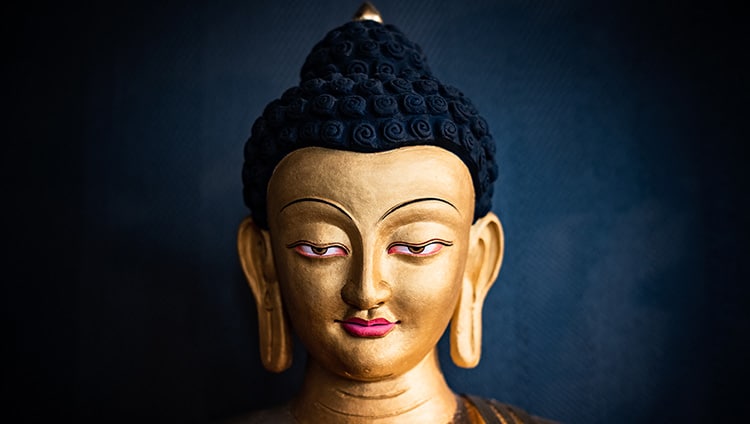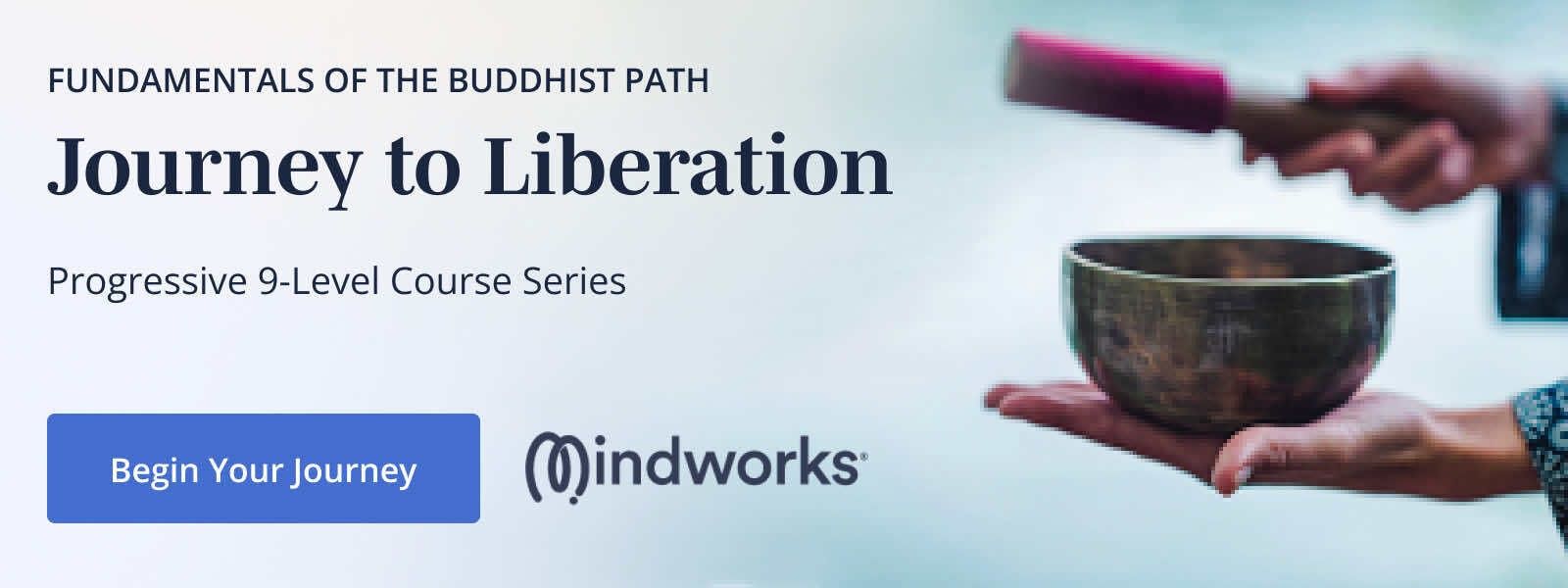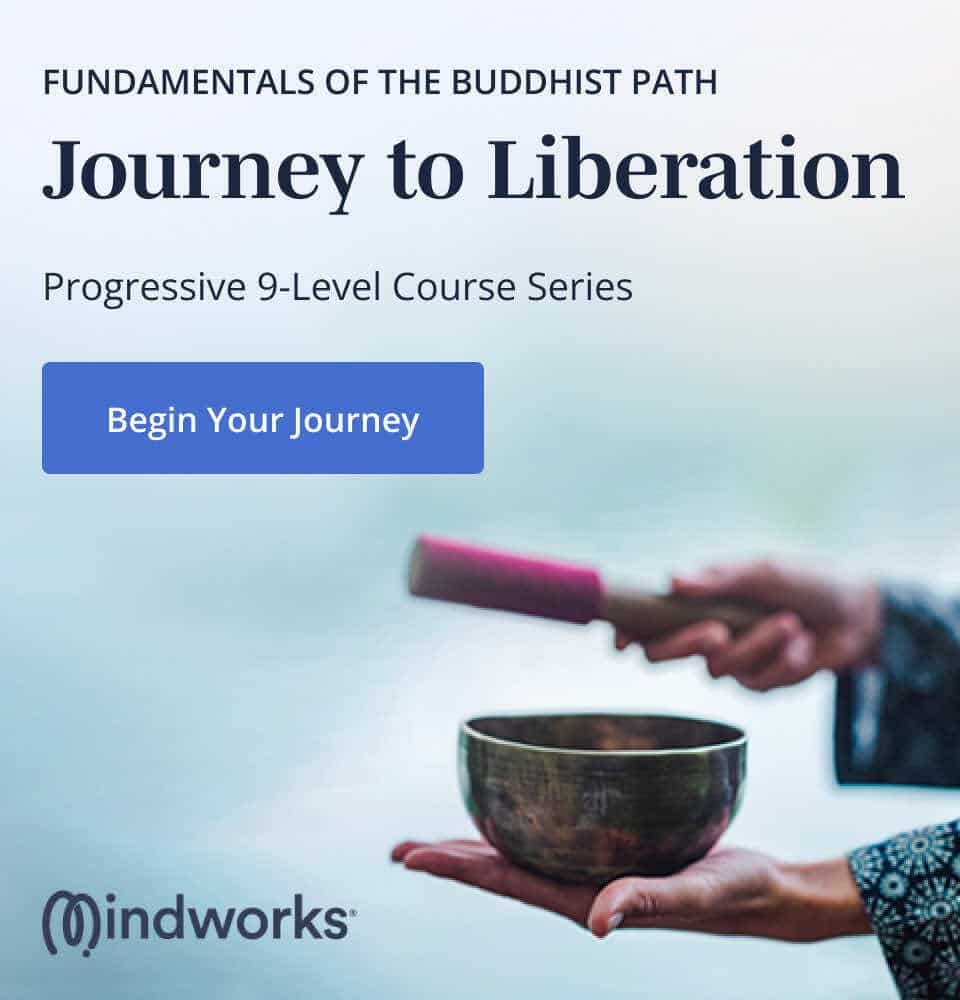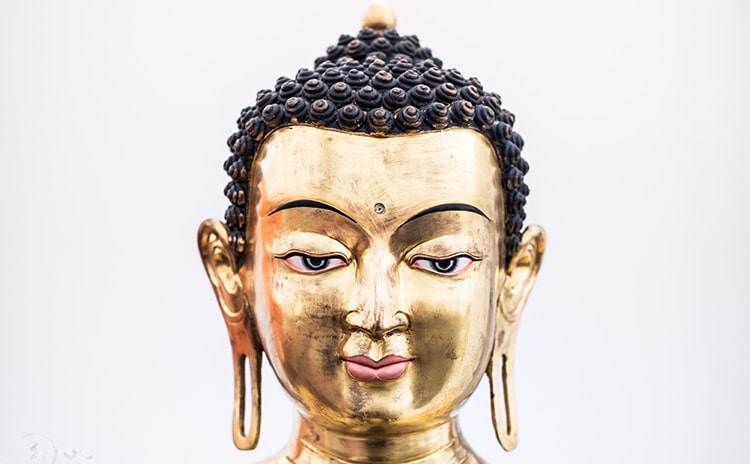The Life Story of the Buddha
Category: Buddhist Path | Mind Trainer Articles | Recent Meditation Posts

Life-changing lessons we can learn from the Buddha
The Buddha did not begin his life as “The Buddha.” He began as a child named Siddhartha who was born to a royal family over 2500 years ago in Lumbini, present-day Nepal. Soon after his birth, his father the king summoned a seer to predict the infant’s future. The seer told the king that baby Siddhartha had an extraordinary destiny. He would either become a chakravartin—an emperor who would rule over a huge realm—or a Buddha, an awakened sage who would benefit countless beings.
The king didn’t want his son to become a sage because he was counting on him to rule the kingdom one day. As a result of this, he made sure that Siddhartha’s upbringing was very sheltered. The prince grew up in a palace where he was shielded from the sufferings and difficulties of the world. He was given wonderful things to eat and drink and only kept company with the finest of friends. Everyone loved him. Everyone was always healthy. To ensure his contentment, Siddhartha was not allowed to witness or experience any difficulties.
The story goes that one day when he was a young man, Siddhartha wanted to venture outside of the palace grounds and see what the world was like. He asked his friend and charioteer Channa to take him to see the kingdom. The first day they went out he saw a person who was very old and frail. Because every person he’d ever known until then was youthful, vigorous, and attractive, he was profoundly affected by this experience. The next day he went out again and saw someone who was very ill. The third day he saw a corpse being carried to a funeral pyre. The prince was deeply moved and dismayed by these visions of old age, sickness, and death. On the fourth day he saw a monk meditating serenely under a tree.
Once home, Siddhartha asked Channa, “Will aging happen to me?” Channa replied, “Yes, my lord, old age happens to everyone who lives long enough.” “And will I get sick like the people I saw?” And Channa said, “Of course. Everyone is subject to illness.” “And will I die?” “Yes, my lord.”
Siddhartha realized how unsatisfactory his life of pleasure had been. If he was eventually going to grow old, become sick and die, where was the meaning? For me, this is one of the most fascinating aspects of the Buddha’s story because if you think about it, we too have led sheltered lives. Our ignorance and self-centeredness have shielded us from old age, sickness, and death; they have insulated us from seeing the reality of suffering that exists all around us. When Prince Siddhartha was no longer sheltered from this truth, he saw it so clearly that it radically changed something inside of him. It gave him the motivation to seek a more meaningful way of being.
We’re not quite so sensitive and intelligent as Siddhartha. We see suffering and negotiate with it. We turn to distractions and fool ourselves into thinking that the suffering has been appeased. But then it crops up again and we have to distract ourselves once more. We tend to deal with suffering by creating our own artificial pleasure palace and barricading ourselves inside of it. We can learn a lot from the Buddha’s life in this respect.
So what did Siddhartha do next? He recalled that once, while sitting under an apple tree in the garden when he was a boy, he had experienced a wonderful, spacious moment of being fully present. He felt that somehow this was the answer: he simply needed to become who he truly was. Inspired by the vision of the monk he saw meditating, Siddhartha decided to leave the palace to seek the truth of existence, and convinced Channa to take him.
At that point he was married to Princess Yasodhara and they had a young son named Rahula. I’m sure it was difficult for him to take that step. And it is difficult for us. We don’t have to physically leave our family and our home, but if we want to pursue the Buddhist path we will have to leave behind our incessant comfort-seeking and hopes of satisfying our egos. We have to trust that the awakened state of mind provides a greater, more permanent sense of well-being than anything ego has to offer. We can access this ourselves directly. Just like Siddhartha’s experience under the apple tree, we too can enjoy transcendent moments of well-being, of simple presence.
So Siddhartha left the palace, cut his hair, and switched his clothes with Channa’s. He wandered incognito and met various people on his path, including yogis and ascetics who agreed to teach him about meditation and the spiritual path. But he recognized that while the meditation practices he mastered led him to more subtle levels of mental bliss, pleasure was not what he was seeking. “I am seeking freedom from suffering, but even in an advanced meditative state, I will still be subject to birth, old age, sickness, and death. There must be something more,” he thought.
So he left these incomplete spiritual practices behind and became an ascetic. Still seeking answers, Siddhartha asked himself if the body was the source of suffering. He began to practice extreme self-abnegation in order to overcome all physical desires. He ate almost nothing and became emaciated.
After seven years of this he concluded that extreme asceticism was not the answer either. So he stood up. Very weak from his many years of deprivation, he actually fainted. Fortunately, a young milkmaid came and offered him a yogurt dish. As soon as he partook of it, he felt tremendously rejuvenated. Settling himself on a grass mat under a sacred fig tree, he vowed not to get up until he had grasped absolute truth.
It is taught that he achieved enlightenment, the awakened state of mind, that very night. As he was sitting, he grew more and more relaxed, more and more present. He was not trying to manipulate his mind, achieve an alternate state of consciousness or reach a higher level of meditation. He was just being. And the more he abided in this presence, the deeper and vaster his awareness grew.
At this point Mara—the archetypical creator of obstacles—set out to keep Siddhartha from becoming enlightened by sending his four daughters to wreak havoc. One tried to make him angry, one tried to seduce him, and so on. And in each case, Siddhartha remained unmoved. Mara’s attacks were like arrows that turned into flowers and fell to the ground before they could harm the sage. And it’s through the experiences of that evening that he achieved the fully awakened state of mind and became the Buddha.
Here again, the Buddha’s life shows us how to practice. Normally we try to push away things we don’t like, pull things we like toward us, and ignore whatever we don’t much care about. Not only material things—spiritual matters as well. We want to feel peaceful. We don’t want our meditative state of mind to be bothered by those pesky thoughts. We’d love to get rid of agitation and dullness. But we can’t. The Buddha showed us that we can learn to remain in a state of plenitude and well-being so that all of the attacks and seductions of the daughters of Mara—our own ego-centered habitual patterns—fall like flowers.
After the Buddha achieved the awakened state of mind, his next action was to think very carefully about whether other people could understand this. He saw our confusion and our egos, yet he also saw that there were people among us who could understand and promulgate the profundity of his teaching.
He set out to find the five friends who had been on his ascetic journey with him. They had parted ways when Siddhartha had decided to seek a less extreme way of practice. He found them sitting together in a grove; they recognized him from a distance and wanted to ignore him because, unacceptably to their minds, he had abandoned the ascetic path. But as he slowly and mindfully walked toward them, they saw that he had a wonderful glow about him. His presence was so radiant that they could not help but welcome him. They asked the Buddha how it was that he seemed so different. And he explained that he had found what he’d been seeking: he had found the end of suffering. It was then that the Buddha gave his first teaching, the doctrine that would become known as the Four Noble Truths.
The Buddha taught for 45 years after that, giving many instructions on how to work with mind. At the end of his life, he gathered his disciples around him and his final teaching was: work towards your own realization and liberation with diligence. “Be a light unto yourselves,” he said. And then he died.
Even his passing was a life-lesson to us. If a Buddha who has accomplished everything has to die, can we possibly escape death? Buddha’s final teaching was the powerful fact of impermanence. We all have the capacity to become awakened, as the Buddha did. But not if we continue to ignore the truth of suffering and pass up our best chance to peek outside of the pleasure palaces we’ve been perpetuating.
This article is excerpted from our new Buddhist course series – click on the banner below for more information.











